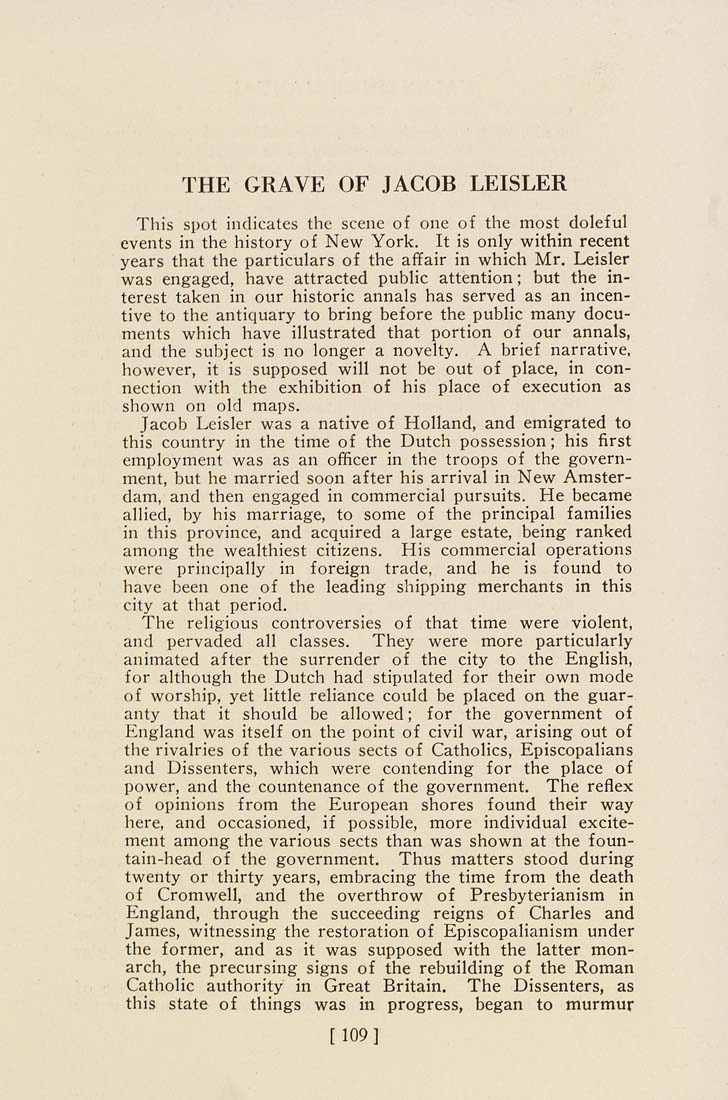THE GRAVE OF JACOB LEISLER
This spot indicates the sccne of one of the inost doleful
events in the history of New York. It is only within recent
years that the particulars of the affair in which Mr. Leisler
was engaged, have attracted public attention; but the in-
terest taken in our historic annals has served as an incen-
tive to the antiquary to bring before the public many docu-
ments which have illustrated that portion of our annals,
and the subject is no longer a novelty. A brief narrative,
however, it is supposed wiU not be out of place, in con-
nection with the exhibition of his place of execution as
shown on old maps.
Jacob Leisler was a native of Holland, and emigrated to
this country in the time of the Dutch possession; his first
employment was as an officer in the troops of the govern-
ment, but he raarried soon after his arrival in New Araster-
dam, and then engaged in commercial pursuits. He became
allied, by his marriage, to sorae of the principal farailies
in this province, and acquired a large estate, being ranked
among the weaíthiest citizens. His commercial operations
were principally in foreign trade, and he is found to
have been one of the leading shipping merchants in this
city at that period.
The religious controversies of that time were violent,
and pervaded all classes. They were raore particularly
animated after the surrender of the city to the English,
for although the Dutch had stipulated for their own mode
of worship, yet little reliance could be placed on the guar-
anty that it should be allowed; for the governraent of
England was itself on the point of civil war, arising out of
the rivalries of the various sects of Catholics, Episcopalians
and Dissenters, which were contending for the place of
power, and the countenance of the government. The reflex
of opinions from the European shores found their way
here, and occasioned, if possible, more individual excite-
raent araong the various sects than was shown at the foun-
tain-head of the governraent. Thus matters stood during
twenty or thirty years, embracing the time from the death
of Cromwell, and the overthrow of Presbyterianism in
England, through the succeeding reigns of Charles and
Jaraes, witnessing the restoration of Episcopalianisra under
the forraer, and as it was supposed with the latter mon-
arch, the precursing signs of the rebuilding of the Roman
Catholic authority in Great Britain. The Dissenters, as
this state of things was in progress, began to murmur
[109]
|








